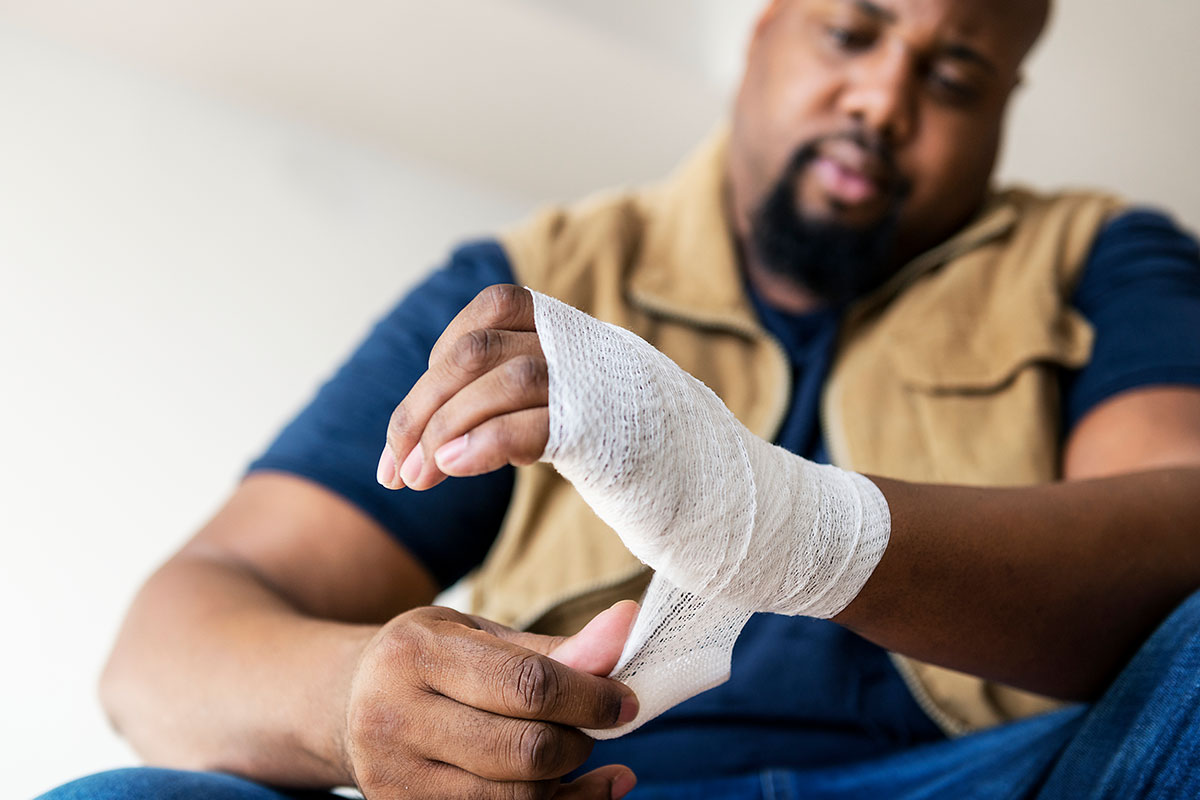Introduction
Wound care monitoring is an essential facet of health care, particularly in the treatment of persistent injuries and complex injuries. Whether it's a straightforward cut or an extra complicated ulcer, effective wound administration can dramatically influence recovery end results. Appropriate approaches not only quicken healing however likewise lower the danger of infection and complications. As medical care specialists, comprehending these techniques is critical. In this short article, we dive deep into Wound Treatment Monitoring: Methods for Effective Outcomes, encompassing various aspects such as training for professionals, nursing education and learning, and progressed strategies for handling intricate wounds.
1. Understanding Injury Treatment Management
1.1 What is Wound Treatment Management?
Wound treatment monitoring describes the organized method to treating wounds through correct assessment, diagnosis, and therapy methods. It consists of every little thing from cleansing and clothing wounds to monitoring recovery progress.
1.2 Relevance of Wound Care
Effective injury care is important because it helps stop infections, advertises faster healing, and eventually lowers healthcare costs associated with extended treatments.
2. Types of Wounds
2.1 Acute Wounds
Acute injuries are those that recover quickly without issues. They normally result from surgery or accidental injuries.

2.2 Chronic Wounds
Chronic wounds persist over time and are frequently related to hidden conditions such as diabetes or vascular disease.
3. The Duty of an Injury Treatment Specialist
3.1 What Does an Injury Treatment Specialist Do?
An injury care expert focuses on detecting and dealing with different kinds of injuries making use of specialized expertise and techniques.
3.2 Training Required for Specialists
To end up being a wound treatment expert, one must undertake rigorous training that includes both theoretical expertise and useful skills.
4. Wound Care Expert Training
4.1 Summary of Training Programs
Training programs for wound care specialists vary extensively but typically include coursework on composition, physiology, and the latest wound treatment technologies.
4.2 Qualification Options Available
Various companies offer accreditations in wound care management that improve integrity and expertise in the field.
5. Wound Care Educating for Nurses
5.1 Significance of Specialized Training
Nurses play an essential role in patient treatment; therefore, specialized training in injury administration is crucial for delivering top quality healthcare services.
5.2 Curriculum Components in Nursing Programs
Most nursing programs currently include modules concentrated on basic wound care training to outfit registered nurses with fundamental abilities required in clinical settings.
6. Wound Treatment Training Courses
6.1 Online vs On-site Courses
With the rise of electronic understanding systems, many specialists are selecting online wound care training courses that offer flexibility without compromising on quality.
6.2 Training course Web content Overview
Typical training course content consists of anatomy pertinent to wound healing, ideal techniques in dressing application, infection control measures, amongst others.
7. Basic Wound Care Training Essentials
7.1 Trick Abilities Obtained With Standard Training
Basic wound care training furnishes people with abilities like cleaning strategies, applying dressings effectively, and identifying signs of infection.
7.2 Significance of Hands-on Practice
Theory alone isn't sufficient; hands-on practice is crucial for developing self-confidence and proficiency in taking care of wounds effectively.
8. Advanced Strategies in Complicated Wound Care
8.1 Comprehending Complicated Wounds
Complex injuries require specialized interventions due to their nature-- often involving much deeper tissues or underlying wellness problems that prevent recovery processes.
8.2 Therapy Modalities
Advanced modalities include unfavorable pressure wound therapy (NPWT), bioengineered tissues, and other ingenious strategies tailored to advertise recovery in complex cases.
9. Chronic Wound Care Management Strategies
9.1 Identifying Underlying Causes
Identifying the origin of chronic wounds-- be it poor circulation or diabetic issues-- is crucial for reliable therapy plans.
9.2 Multidisciplinary Approach
A successful chronic wound monitoring strategy frequently includes collaboration amongst different healthcare providers including dietitians, podiatric doctors, and physical therapists.
10. The NDIS (National Handicap Insurance Policy System) & Injury Care
10.1 NDIS Support Services
For individuals under the NDIS framework needing continuous injury administration assistance services are crucial to ensure they receive proper care tailored to their needs.
10.2 Financing Options Available
Understanding financing choices offered with NDIS enables patients to gain access to needed therapies without financial burden.
Frequently Asked Concerns (FAQs)
Q1: What credentials do I need to come to be an injury treatment nurse?
A: Commonly needs a nursing degree along with specialized certification in injury management gotten via acknowledged programs or courses concentrated on nursing wound care training.
Q2: The length of time does it require to complete a wound care training course?
A: Program period varies; nonetheless, lots of on-line programs can be finished within several weeks while extensive accreditation programs may take months depending on depth and timetable flexibility.
Q3: Can I manage my own chronic wounds at home?

Q4: Why is infection control critical in injury management?
A: Infection control avoids issues that can emerge from unattended infections which may postpone healing or lead to extra extreme wellness concerns requiring considerable medical intervention.
Q5: Are there certain products suggested for chronic injury management?
A: Yes! The choice of items depends on the type of chronic wound; typical choices include hydrocolloid dressings, alginates, foam dressings and so on, customized based upon individual needs evaluated by healthcare providers.
Q6: Is there ongoing education available after initial certification?
A: Absolutely! Numerous companies motivate continuous professional advancement via workshops, seminars, on the internet resources ensuring practitioners remain updated with advancements in efficient practices related to persistent injury care management.
Conclusion
In conclusion, reliable Wound Care Monitoring: Techniques for Successful Outcomes count greatly on proficient specialists who understand both fundamental principles and advanced strategies essential for promoting optimum recovery conditions throughout varied person populations-- from severe injuries needing prompt interest to complicated persistent injuries needing recurring assessment and intervention methods tailored towards all natural health objectives. By focusing on education and learning via comprehensive training programs made specifically around evolving requirements https://telegra.ph/The-Future-of-Wound-Care-Management-Trends-in-Expert-Training-03-24 within this vibrant field-- medical care experts can enhance their capacity supplying phenomenal service while guaranteeing favorable client experiences producing effective outcomes over time.
